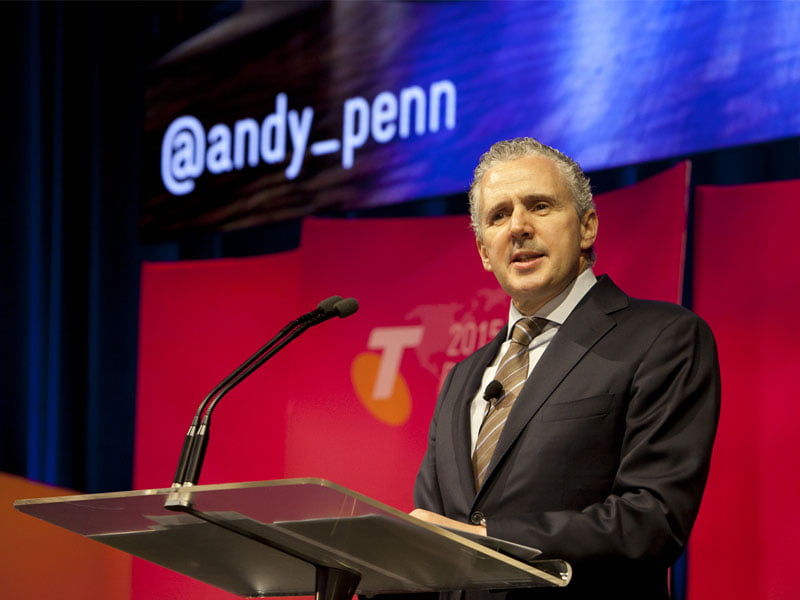Just two years ago, when he was finance chief, Telstra CEO Andy Penn was at pains to downplay any likelihood that Telstra would invest in any mobile infrastructure.
The exception, he said back then, could be some sort of niche play.
So it is something of a change of heart now that he is deep in negotiations for joint-venture plans to build the third mobile communications network in the Philippines.

Frankly, it’s not really a surprise – for two key reasons.
The first is that two years ago, under former chief executive David Thodey, Australia’s biggest telecoms group set a fresh Asian strategy, its third since Telecom Australia and the Overseas Telecommunications Company were joined together to create Telstra.
Andy Penn had been specifically chosen by Telstra’s board as CFO because of his Asia experience as the chief of insurance group AXA Asia Pacific before its breakup.
Mr Penn has been a key player in developing Telstra’s latest foray into Asia, and he is now expanding the scope of the project.
The other reason that it’s unsurprising to see Telstra opt for a mobile network play is that the company is still – at heart – a network and engineering company.
This has always been what Telstra does best, although its marketing skills are now formidable also.
Combined with its partner San Miguel, which is no marketing slouch either having created one of Asia’s best-known beer brands with an unmatched retail distribution network, the joint-venture certainly has the right ingredients to succeed.
The choice of the Philippines was naturally driven by market dynamics. Unusually in Asia, the country only has two mobile networks, and with a population of 90 million people, the market is ripe for a third competitor at the very least.
Telstra has long its enterprise services arm in Manila. More importantly has also had call centres in the country for many years, although it won’t say how many staff.
This has giving its executives deep in-country experience, a lack of which is one of the top reasons foreign corporations get tripped up in offshore ventures.
So far, telecoms analysts have responded to news of the venture – which is not a done deal, yet – with a cautious thumbs up or wait and see.
Macquarie Securities telecoms analyst Andrew Levy has been cheered by the fact that a high level, macro factors support investment in the Philippines telecoms market.
“The Philippines has a large and young population.” he says, adding that while the mobile market is highly penetrated and dominated by two players, “mobile data usage is low by regional standards and there is significant scope for growth in data services as smartphone costs fall, network investment is increased and spectrum assets are deployed.”
Sachin Gupta, who runs Nomura’s Asian telecoms coverage from Singapore had no doubt there will be investor scepticism.
“Telstra has a mixed track record on overseas investments (TelstraClear, Reach, CSL etc); although in recent years it has been successful with e-commerce related investments (like Soufun and AutoHome), he said.
“But as long as it is a well-structured joint-venture, with decent operational control and reasonable capital investment, perhaps we need to be a bit more open-minded.”
Psychologically, it will be a fascinating test for Telstra, a company that has only ever known incumbency in the mobile market.
It has only ever been the Number One player in the Australian market, only briefly challenged by Optus, since it rigged its first analogue network.
It was also the Number One player – or a close Number Two – in Hong Kong during its ownership of the Hong Kong Telecom network.
Still, Telstra does have plenty of experience in Southeast Asia although its stretches back to the early 1990s.
In those times, under the now prescient leadership of Telstra’s first chief executive Frank Blount it built the first mobile networks in India, Vietnam and Indonesia.
But mobile telephony did not explode in the developing world until a decade after it had become entrenched in wealthy countries.
Telstra had long rued not hanging on to those early investments, but this JV brings the company full circle in Asia.
A nominal $5 billion was named as the amount of investment Telstra was initially planning to lay out in a series of measured investments around the region. A big number for most companies but not so much for one with an enterprise value of about $80 billion.
The risk for Telstra in such ventures is far more about management credibility, than the incremental returns that shareholders can look forward to in future years with long dated network project.
David Thodey picked up a company battered internally by Sol Trujillo and his rapacious hordes – as well as by the markets – and restored its brio and primacy in the Australian market.
With growth in the saturated, highly-competitive Australian telecoms market relatively limited, Mr Penn will be judged on his success moving into new markets such as e-health, but most particularly in Asia.
On paper, at least this looks like reasonably bold but smart move.
Photo Credit: Telstra
Do you know more? Contact James Riley via Email.

